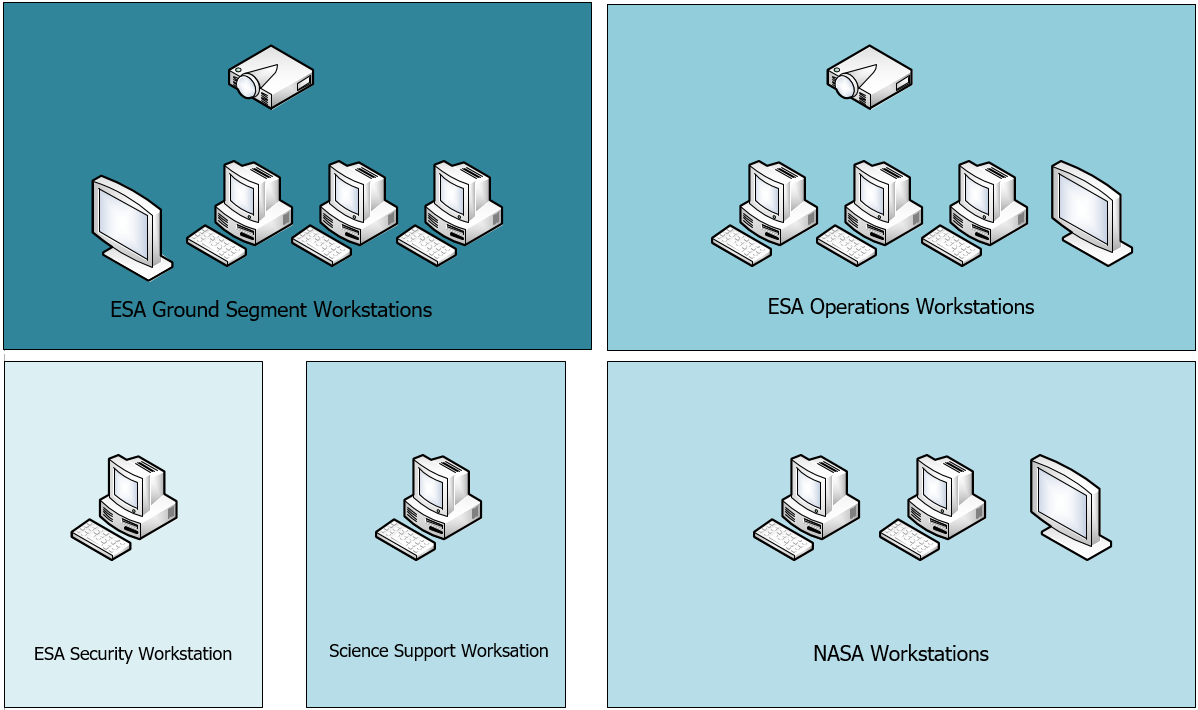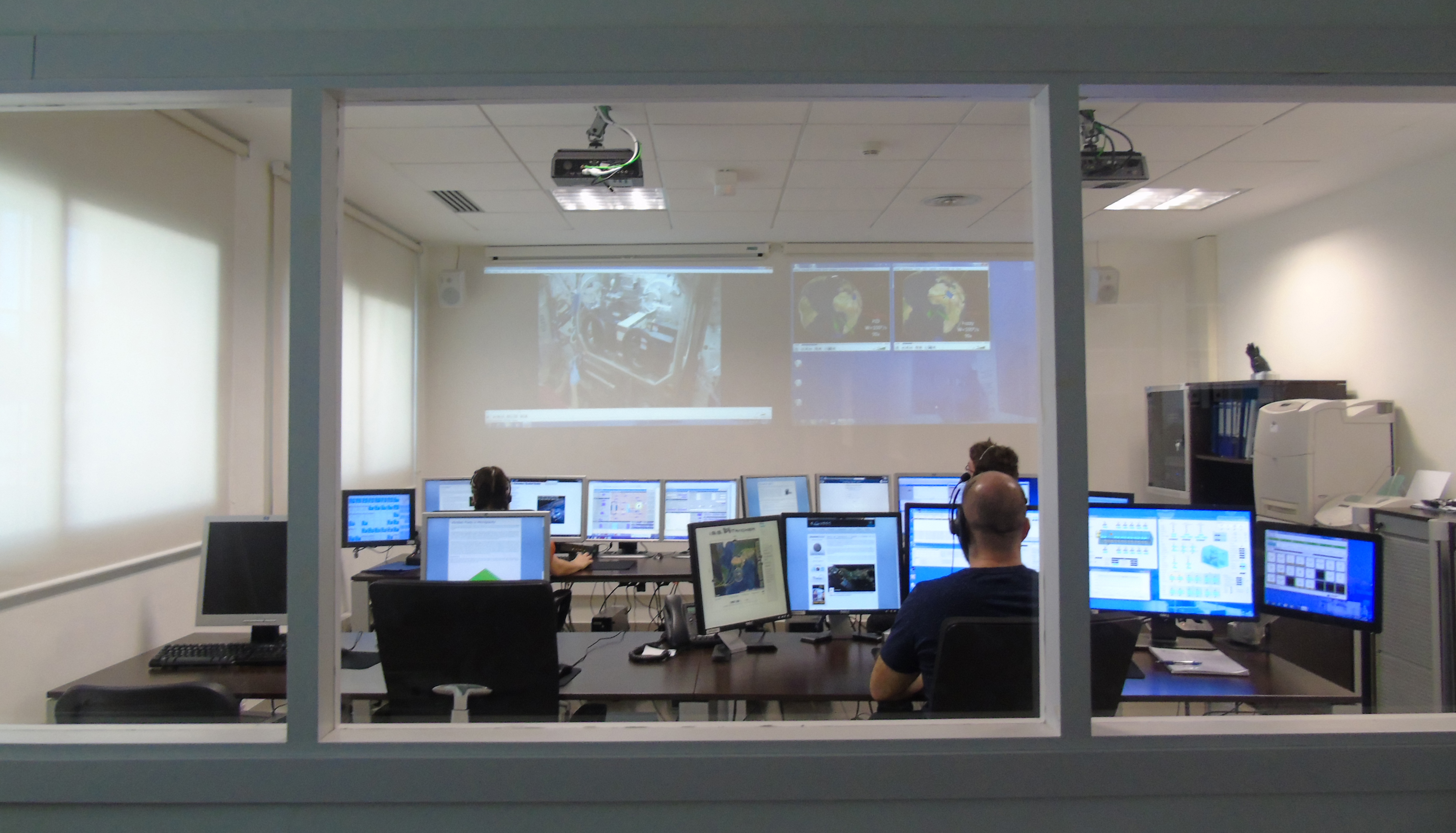Control Room
The control room is the heart of E-USOC, where the Ground Controllers (GCs) and trained Operators (OPS) carry out their duties related to the operation of experiments (or payloads, in aerospace terminology) on board the International Space Station (ISS). The control room is a restricted area: only authorized personnel are allowed access.
The E-USOC control room is prepared to support two different payload operation scenarios:
-
Payloads inside the Columbus module (ESA environment). In this configuration, we use the Columbus mission control system (CD-MCS), which is connected with the Columbus Control Centre (Col-CC) in Munich through a private dedicated network (IGS).
-
Payloads inside a NASA facility (NASA environment). For this scenario, we use a set of tools provided by the Huntsville Operations Support Center (HOSC) specifically developed for remote users to control their payloads. We are connected to the Marshall Space Flight Center (MSFC) in Huntsville by means of a virtual private network (VPN).
The room is organized around five different workstations: four for the ESA environment, two for the NASA environment, one dedicated to security, and a science support PC. The figure below provides an overview of the control room layout:

A typical operation workstation is comprised of:
- A computer connected to the operations network for real-time monitoring and commanding of the experiment.
- A computer with access to the operation support tools, for off-line or near-real-time tasks.
- A computer connected to the Internet, mainly for office purposes (email and other network services).
- A touchscreen and headsets (also known as Keysets) for voice communication between the participants in the ISS project, including the ISS astronauts.
The Security Workstation is a particular PC used by the E-USOC Security Manager to ensure the security of the control room environment. Related tasks include issuing user certificates, monitoring and inspecting the systems and network security logs, and managing firewall policies.
The science support workstation is intended to be used by the science team for various activities (e.g., familiarization or checkout sessions). The principal investigator (PI) will generally be able to monitor the experiment from his/her remote location.
The control room is also equipped with an audio-visual system comprised of two projectors and four speakers connected to an AV matrix. We have the capacity to receive live video from the ISS outdoor and indoor cameras, allowing us to follow and support crew activities.


